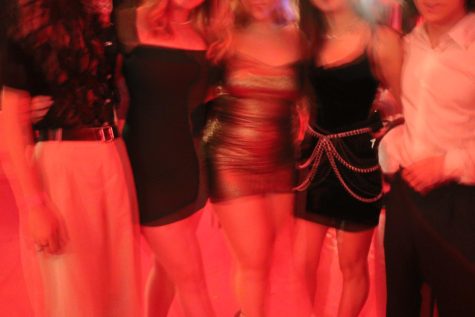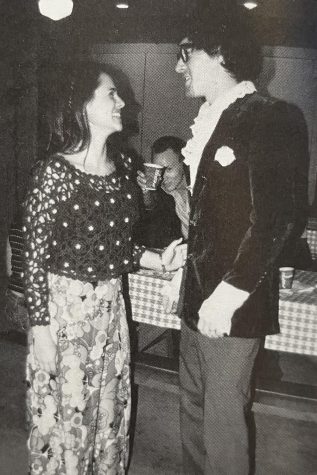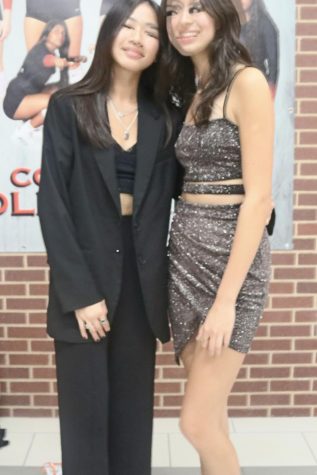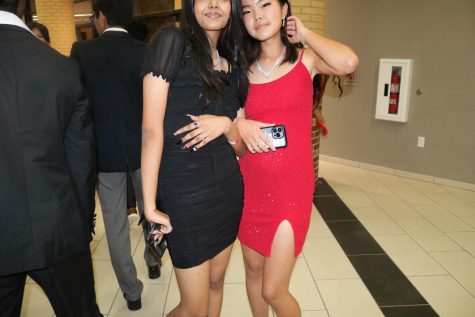Homecoming Looks: Then vs. Now
October 11, 2022


When I attended the homecoming dance at Coppell High School on Sept. 24, the variety of outfits students wore made me wonder about homecoming fashion trends and how they have evolved over the years. I decided to take a look at past homecoming dances in old CHS yearbooks and a few pictures from the recent dance to compare what people wore to homecoming back then to what they wear today.
As music was blasting in the background of the dance floor, styles such as bodycon, form-fitted, sequined and strappy dresses could be seen on the CHS Arena dance floor. These styles greatly differed from the knee-length, floral print or silk 90s and 2000s dresses.
As for guys, many wore black or white turtlenecks, often pairing them with a fitted colored blazer, chains, plaid pants and loafers. Some opted for fitted suits. It was clear fashion trends reminiscent of the CHS mascot––solid color button up shirts with a patterned tie, or plaid shirts with jeans and cowboy hats––had been left in the past.


Individuals evidently feel more comfortable challenging gender norms, pairing pantsuits with bandeau tops and loose blouses with blazers. In the past, individuals would feel more constricted to wear what was expected of their genders.
According to CHS 2014 graduate and current math teacher Philip Smith, students today are getting ‘creative and adventurous’ with what they wear compared to in the past.
“People are getting more adventurous now, which I like,” Smith said. “People are wearing a lot more brighter colors, they’re wearing patterns and designs that are a lot more unique, choosing to express

themselves more so they have more interesting designs.”
CHS junior Katy Vazhappily noticed that there was a certain style of dress and color that a lot of girls were wearing to the dance.
“There were a lot of sparkly dresses, a lot of bodycon dresses, that was the biggest [style],” Vazhappily said. “A lot of my friends wore red, [and] with the guys, they just wore normal suits. A lot of guys had really cool shoes that made their outfits different. I feel like [back then] people wore more A-line styles and floral patterns rather than tight dresses.”
Follow @CHSCampusNews on Twitter.


(Wendy Le)









